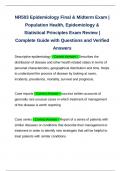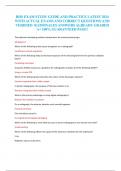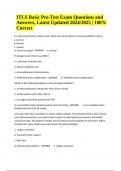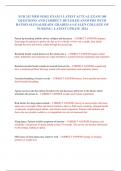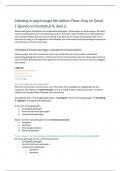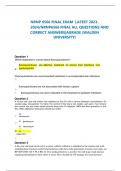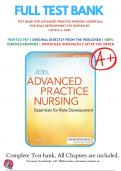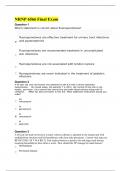Exam (elaborations)
NR503 Epidemiology Final & Midterm Exam | Population Health, Epidemiology & Statistical Principles Exam Review | Complete Guide with Questions and Verified Answers
- Course
- Institution
NR503 Epidemiology Final & Midterm Exam | Population Health, Epidemiology & Statistical Principles Exam Review | Complete Guide with Questions and Verified Answers NR503 Epidemiology Final & Midterm Exam | Population Health, Epidemiology & Statistical Principles Exam Review | Complete Guide with...
[Show more]
